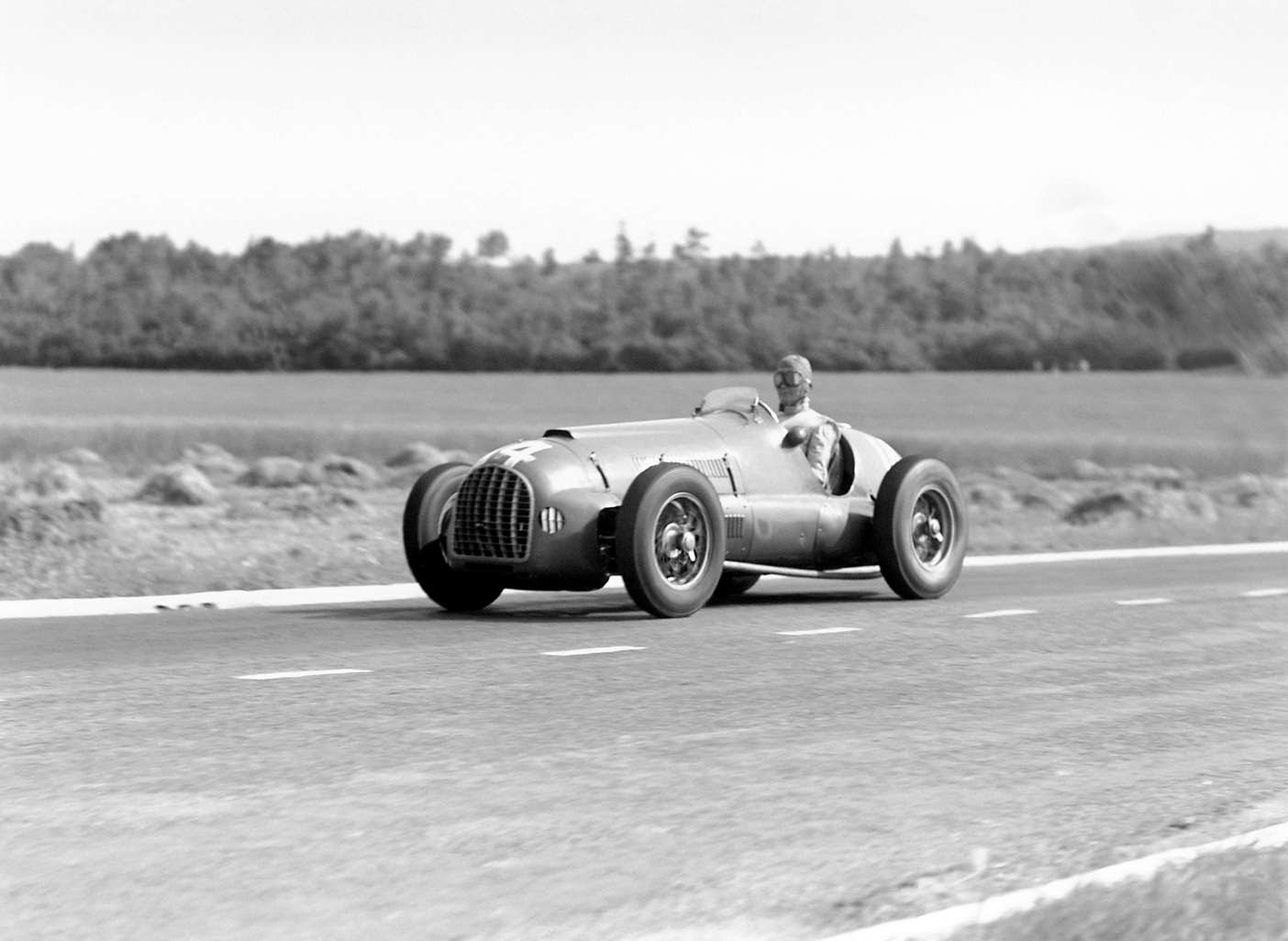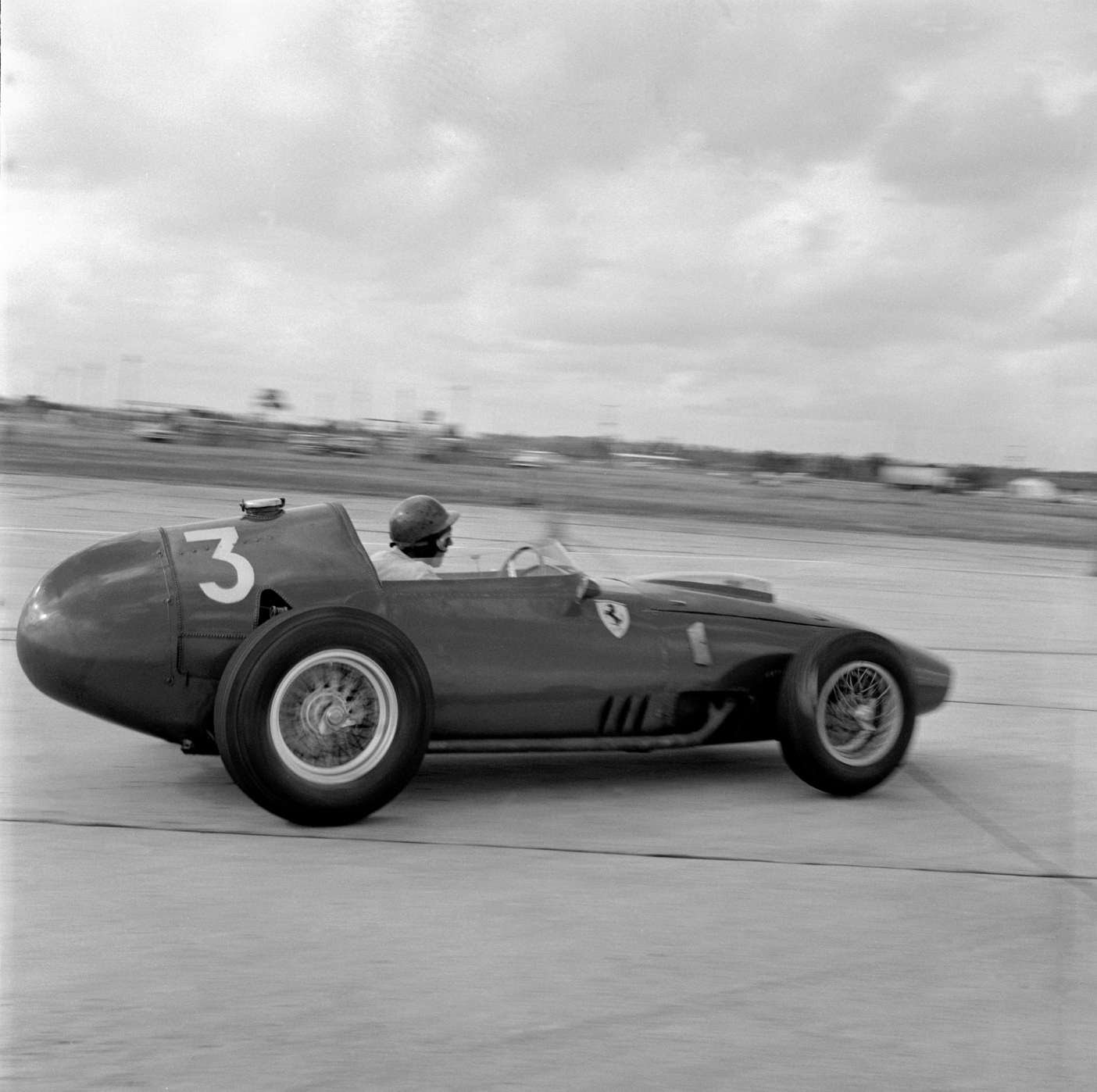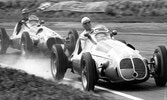 SPORTS CAR CENTRE PRESENTS
SPORTS CAR CENTRE PRESENTS
Motoring news from around the world - January 2019
11 Brits who raced for Ferrari in F1
Italian magazine Autosprint ran a front cover last week featuring Lewis Hamilton striding towards the camera wearing Ferrari overalls. Was the mock image simply wishful thinking from a partisan media whose patience with Sebastian Vettel is wearing thin, or might it not be out of the realms of possibility?
&width=1600)
Put yourself in the five-time world champion’s shoes for a moment. One the one hand, he is on top of the world and happy in a Mercedes-Benz team that has consistently given him the best and most competitive F1 car he could wish for. Why the hell would he leave?
He surely wouldn’t for anyone else – but Ferrari? For all his personal interests and rich life away from F1, Hamilton lives for motor racing and will not be immune to the emotional lure of the Scuderia. And to add a title or two for the most famous team of them all – well, that would surely end all GOAT debates for good.
So could he be tempted? Well, stranger things have happened. And if he was, he would join a roster of Brits at Ferrari that is perhaps longer than you might think. Check out the roll-call below.
1 Peter Whitehead
The amateur pre-war racer and RAF pilot is best known in F1 terms as a respected privateer who became the first man to convince Enzo Ferrari to sell him a grand prix car, then ran them in patriotic British Racing Green.
Whitehead’s place on this list is admittedly precarious. Only once was he entered for a world championship grand prix by the factory, at the Swiss GP at Bremgarten in 1950 – and he failed to qualify. But still – he ‘represented’ the Scuderia, even if he never raced, so for us that counts…

2 Mike Hawthorn
The ‘Farnham Flyer’ joined in 1953 – when he beat Juan Manuel Fangio after an epic duel at Reims – and became Britain’s first world champion in a Ferrari in 1958.
Just months after securing his title, Hawthorn lost his life in a road accident near Guildford.

3 Peter Collins
Hawthorn’s ‘Mon Ami Mate’ earned Enzo Ferrari’s respect during his first season at the Scuderia in 1956, after giving up his own world title ambitions by handing his car over to Fangio at Monza.
The greatest of his three Ferrari F1 wins was surely his last, at Silverstone in 1958 when he drove to his limits to outpace Stirling Moss’s Vanwall. A matter of weeks later Collins died at the Nürburgring while chasing Tony Brooks.

4 Tony Brooks
Teamed with Moss at Vanwall in 1958, the pair generally had the better of fellow Brits Hawthorn and Collins at Ferrari – even if Hawthorn would end up champion. But when the British team withdrew following the death of Stuart Lewis-Evans, and with both Hawthorn and Collins having also been lost (this was the reality of a cruel and deadly era), Brooks found himself in a red car for 1959.
Victories at Reims and the Nürburgring put him in title contention, but this brilliant, intelligent man chose to pit at the Sebring season finale after being hit by team-mate Wolfgang von Trips. The stop turned out to be needless, but Brooks hadn’t known that. His life was worth more than a world championship, he’d reasoned – and he stands by that decision to this day.

5 Cliff Allison
Like Brooks, Allison was part of a stable of new-generation stars hired in 1959 – but after just six races his career at the Scuderia was cut short.
Following a second place in Argentina, Allison was hurled from his cockpit at Monaco and woke up in hospital speaking French, despite never having learned the language…
Sidelined for a year, he finally returned to F1 in a privateer Lotus in 1961, only to break both legs in an accident that ended a once-promising career for good.

6 John Surtees
The only man to win world titles on two wheels and four should have won more races, and possibly championships, for Ferrari. But Maranello’s Machiavellian politics and his own quick temper put paid to that. He left Ferrari in a rage in 1966.

7 Mike Parkes
A brilliant engineer and accomplished sports car racer, Parkes emerged from Surtees’ F1 shadow after John’s sudden departure.
Non-championship victories at the Silverstone International Trophy and at Syracuse in ’67 gave sign of his capabilities – only for a leg-breaking crash at Spa to end his F1 career prematurely.

8 Jonathan Williams
Only one F1 world championship start to his name – and he made it for Ferrari.
Motor racing was just a small part of Williams’s full, adventurous life. Signed during 1967, he mostly raced sports car, but stepped up to the F1 team for the Mexican GP and finished eighth – only to be dropped the following season.

9 Derek Bell
The future sports car legend enjoyed a rich and varied career, but remains proud of his two F1 world championship starts for the Scuderia. Signed for Formula 2 in 1968, Bell was called up for the non-championship Oulton Park Gold Cup and then made his world championship debut for the team at, of all places, Monza.
A lack of opportunities forced him to move on in 1969, but he’d race for Ferrari again in sports cars.

10 Nigel Mansell
Frustrated by Williams’s lack of a turbo engine, Mansell became the first Brit to race a Ferrari in F1 for more than 20 years in 1989.
An unexpected fairy-tale victory first time out in John Barnard’s semi-automatic 640 proved a false dawn, but ‘Il Leone’ became a cult hero for the tifosi during two action-packed seasons. Outperformed by new team-mate Alain Prost in 1990, he returned to Williams for ’91 and eventual, long-awaited world championship glory.

11 Eddie Irvine
The Northern Irishman was an F1 rebel at Jordan, then enjoyed four comfortable seasons as Michael Schumacher’s ‘solid number two’ in the late 1990s.
After Schumacher broke his leg at Silverstone in ’99, Irvine found himself the unexpected focus of Ferrari title aspirations. He almost pulled it off too, as Mika Häkkinen and McLaren cracked under pressure. But after a Schumacher-aided victory in Malaysia, Irvine lost his mojo at Suzuka and Häkkinen prevailed. He moved to Jaguar for 2000.
Again, it’s now nearly 20 years since a Brit last raced for Ferrari. Like Mansell before him, is Hamilton the man to end that run? It seems a long-shot – but the best known, currently most successful and most commercially valuable driver in the world at the greatest F1 team of them all? That sure is a juicy recipe.

Goodwood 77 Members meeting
Formula 750 bikes set to swarm 77MM in new Sheene Trophy.
&width=1600)
For the last three years (although the snow got in the way last year March), the Members’ Meeting has been provided with the unmistakeable attack on the senses that only two-stroke engines could produce. The 2019 edition, however, will feature an all-new sensory assault on two wheels.
Jumping back over a decade, the Sheene Trophy will see the finest air-cooled four-stroke Formula 750 racing machines go head-to-head, transporting spectators from the rolling hills of the South Downs to Daytona Beach and the legendary Daytona 200 races of the early 1970s.
Such was the success of the Daytona 200 that it was decided that Europe needed to have its own equivalent, and thus the “European Daytona” was created with the Imola 200. First run in 1972, Paul Smart rode his Ducati 750 Imola Desmo – considered by many as Ducati’s first V-twin – to victory, leading home Bruno Spaggiari in a Ducati 1-2.

The result signalled the start of Ducati’s full-on approach to motorcycle racing and it has reaped the rewards in the world of modified production motorcycles (Superbikes, in Layman’s terms), winning more World Superbike titles than all other manufacturers put together – despite its last title coming in 2011.
The all-new Members’ Meeting race, however, takes its name from another of F750’s finest sons – and an incredibly loved and greatly-missed friend of Goodwood – Barry Sheene. Sheene won the inaugural F750 Championship, a British-based series, in 1973, held one year after the FIM adopted F750 regulations as a separate class.
Tickets for the 77th Members' Meeting are now on sale.
Doug Nye: Two drivers who could show Verstappen and Ocon a thing or two
My goodness what a fuss! While the happy news was that Mercedes-Benz – built in, and run from, the UK – had clinched the Formula 1 Constructors’ Championship title from Ferrari of Italy, hasn’t the media made much of the collision which denied Max Verstappen and Red Bull Racing what could have been well-earned victory in the Brazilian Grand Prix at Interlagos.
Of course most media reaction seems to have condemned Force India driver Esteban Ocon for a ridiculous attempt by a back-marker to affect the race leader’s progress. Verstappen, who has tangled with Ocon in the past, back in their Formula 3 days, was plainly convinced totally of his own blamelessness. His boiling indignation at being taken out of the lead and having to settle instead for ‘only’ second place might have been damped somewhat by race winner Lewis Hamilton’s coolly unconcerned reaction just before they went out onto the victory podium. The now seasoned and near-fully mature veteran simply reminded the Dutch boy “which of you had more to lose?”. And that wise-headed retort should certainly become part of the potential future-World Champion’s learning curve.
For whatever faults he might demonstrate – and smirking at the still-furious Verstappen’s initial verbal approach at the post-race weigh-in was certainly one of them – Esteban Ocon appears to be a proper racer, quite as much a case-hardened street fighter as Verstappen himself plainly is.
In the Dutch boy’s case he inherited his no-compromise style from his racing driver father Jos who has a record of allowing his elbows, and occasionally his fists, to make his point (both inside and outside the sport) although he in turn could say that – within Formula 1 – he learned a measure of physical reaction from the not-always-so-saintly Ayrton Senna, no less.
It was in the Senna Ess just after the pits at Interlagos that the Red Bull and Force India collided. Verstappen cut inside Ocon – who was on fresher, faster tyres and freshly pumped-up by the bungled pit stop at which they had been fitted – into the first left-hand apex. From there to the ess-bend’s second-element right-hand apex is 95-100 yards. The complex is a mirror-image of Goodwood’s St Mary’s ess, but downhill to boot.
So what did Ocon do wrong, and what did Verstappen do right?
Official and media opinion combined seems to condemn Ocon for not letting Verstappen sail by in what was the leading – but at that moment, on its wearing tyres, a marginally slower car. Ocon instead held his station alongside the Red Bull to the right, and gained a little – surging further alongside – as the pair entered that right-hand element. With his overall race lead not really at stake, all that Verstappen had to do then to preserve his car and his advantage was to unload the steering, run a tiny bit wide and let that silly-arse pink-overalled Frenchman take his fleeting – and meaningless – advantage.
But such things are decided within a worthwhile racing driver’s head by nano-second decision making. And Max the Racer turned in, Esteban the Racer (forgiving him, for the moment, his pink overalls) stayed on it, so the pair met. The initial impact was taken – as I am sure you will have seen – by the Red Bull’s protruding right-side floor panel, then the leading face of its right-rear wheel contacted the leading face of the Force India’s left-rear, and both cars spun. But what on earth did Verstappen expect would give him room? Was the Force India to evaporate? Its nose must have been within Verstappen’s peripheral vision, and if it wasn’t – because it was alongside – then he has a positional awareness problem which must surely trouble him again in future. No – here was the impetuous arrogance of an inexperienced race leader, not appreciating that to win a war it can be expedient to avoid a battle…
Verstappen of course went on to finish second, the still incandescent Ocon finished a lap down in 14th and was understandably defensive of his own actions. And while the ensuing confrontation itself, when Max “lost control” and shoved Esteban, might have provided headline-making images for an easily-shocked and precious modern media, what on earth would they have made of some of motor racing’s really hard men from the past?
&width=1300)
Luigi Fagioli in his early days as a leading Grand Prix driver, with the Scuderia Ferrari Alfa Romeo Tipo B Monoposto.
Two instantly spring to my mind, both Italian stars of their time – Luigi Fagioli and first FIA World Champion Driver Dr Giuseppe ‘Nino’ Farina…
Fagioli was a truly tough grizzled veteran who built his world-class racing reputation with Maserati through the 1930s. Born in Osima near Ancona in 1898, Fagioli came from a wealthy middle-class family whose business was making pasta. At high school he earned a middling accountancy degree, but he spent more time shooting birds and wild boars before racing cars. His tactics and demeanour – both on and off the track – were aggressive and always assertive. He racked-up the results for Maserati. In 1933 with the Scuderia Ferrari he won four GP-class races in their Alfa Romeos, and for 1934 Mercedes-Benz hired his services for their new Grand Prix team.
Fagioli would drive the Silver Arrow cars through 1934-36, winning three races in each of his first two seasons. But Mercedes-Benz racing director Alfred Neubauer and team No 1 driver Rudi Caracciola both found Fagioli hard to handle. Team orders? Forget it. Fagioli would always race for himself, and no-one else.
&width=1300)
Fagioli as a works Mercedes-Benz driver - winning the 1935 Monaco GP.
In 1937 he moved to the rival German Auto Union team – by which time (at 39) he was suffering badly from rheumatitis. The inescapable pain did nothing to improve his demeanour. Just as Verstappen and Ocon perhaps had old scores to settle at Interlagos, Fagioli nursed old animosity towards Caracciola. With them now driving for different teams it boiled into open conflict.
One of the fastest race tracks in the world back then was the Mellaha course outside Tripoli in Italian Tripolitania, modern-day Libya. Fagioli and Caracciola battled wheel-to-wheel at various times during the 1937 Tripoli GP there. In the closing stages Caracciola’s Mercedes blocked Fagioli’s Auto Union repeatedly to stop the Italian going after race leader Hermann Lang’s Mercedes. A furious Fagioli finally barged by, and when the finishers pulled into the pit lane he scrambled from his Auto Union and limped as quickly as his painful feet would allow to the Mercedes pit. There, staring-eyed, incandescent, he yelled and gestured wildly at Caracciola… who just grinned at him, dismissively.
And Fagioli didn’t respond by merely pushing the German. Oh no. Instead, he grabbed a wheel-nut hammer from the pit counter and hurled it straight at Caracciola’s head. Racing driver reflexes; Caracciola ducked and the hammer missed. Neubauer and the Mercedes mechanics, joined by Auto Union’s finest, grabbed the still-screaming, swearing Italian, and bundled him away.
&width=1300)
Two truly hard nuts together – Fagioli on the far side, Farina this side - in team-mate Alfa Romeo 158s, 1950 British GP, Silverstone - Farina would win this first-ever FIA Formula 1 Drivers’ World Championship round from the older Fagioli…
Fagioli subsequently retired from racing, only to resume postwar, joining Farina and Fangio in the fabulous ‘Three Fs’ Alfa Romeo works team of 1950. In 1951 he became the oldest Formula 1 race winner (at 52) sharing victory with Fangio in that year’s French GP. Early in 1952 he finished third overall in the mighty Mille Miglia, driving a Lancia Aurelia saloon… But in practice for that year’s Monaco sports car GP he crashed his Lancia in the Tir au Pigeons Tunnel. He was lifted from the wreck with a broken arm and leg. Complications developed and three weeks later – in hospital – he died.

